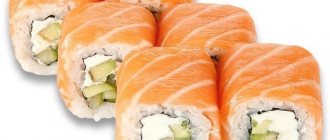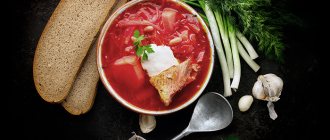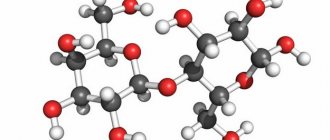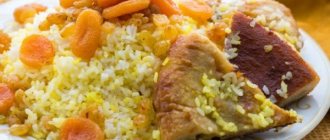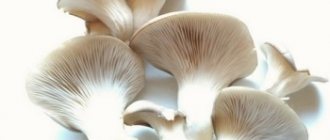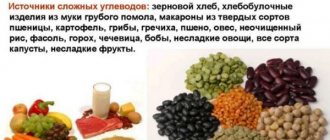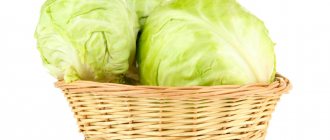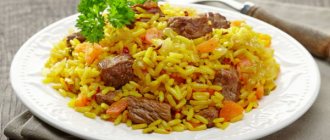Chemical composition of dumplings
Pelmeni (calorie content of 10 pieces is determined taking into account the method of preparation and filling) is a national Russian dish, the classic recipe of which involves the use of minced meat made from natural meat, salt, pepper, eggs, onions and a small amount of flour.
They include a number of beneficial nutrients in their chemical composition:
- vitamin A;
- B vitamins;
- vitamin C (or ascorbic acid);
- vitamin D (or cholecalciferol);
- vitamin E (or tocopherol);
- vitamin H (or biotin);
- vitamin PP;
- calcium;
- phosphorus;
- magnesium;
- selenium;
- fluorine;
- iron;
- iodine.
The concentration of macro and micronutrients depends on the quality of the dumplings filling. The more natural meat a product contains, the healthier it will be for humans.
Composition and benefits of dumplings
Traditionally, this product consists of unleavened dough made from flour and water with the addition of salt, eggs and sometimes milk, and a filling. It is customary to use chopped beef, pork or lamb as filling. You can also use mushrooms, fish, seafood or poultry. True connoisseurs of hunting love to eat dumplings stuffed with game: venison, elk or bear meat. Often, raw ground onions and hot spices are added to the filling to give it a special taste.
The beneficial properties of dumplings depend solely on the valuable properties of the products included in its composition. For example, wheat flour, which is traditionally used to prepare this dish, is a rich source of fiber and also contains B vitamins and vitamin PP. The mineral component in it can be distinguished:
- magnesium;
- copper;
- zinc;
- phosphorus;
- iron.
The meat used to make dumplings is undoubtedly a rich source of protein. For example, pork is rich in lysine, which helps prevent osteoporosis and strengthens bone tissue. Beef or veal is very well absorbed by the human body and retains its useful and valuable composition even during heat treatment. They contain substances necessary for the functioning of the body, such as:
- vitamin E;
- ascorbic acid;
- vitamin A;
- choline;
- B vitamins;
- vitamin D;
- vitamin PP.
They saturate the dish with useful minerals such as potassium, magnesium, zinc and cobalt.
If the filling of dumplings includes fish or seafood, it will be a storehouse of iodine and phosphorus, as well as a wonderful vitamin complex containing the vitamin of youth and beauty - vitamin E, and anti-stress vitamins - B vitamins, and many other useful substances.
Properties of dumplings
Among the main positive properties of dumplings are:
- their ability to create a feeling of satiety in a person that lasts for a long time (4-5 hours);
- high speed and ease of preparation of the product (this feature allows dumplings to be included in the diet of younger schoolchildren, who can prepare their own dish without the help of adults);
- the minimum amount of ingredients required for home preparation of this product;
- accessibility in terms of financial costs (the cost of 400-500 g of factory-made dumplings varies from 80 to 200 rubles. When preparing them at home, about 150-200 rubles will be spent on ingredients for 1 kg);
- the ability to adjust the recipe based on the health characteristics of a particular person (for example, excluding onions from the composition if there is an allergy to this vegetable), without significant loss of the taste of the product.
Fatty meats
Heavy food consists of lamb and pork meat. Lard and fat are usually used to prepare this dish. The energy value does not change with heat treatment. The calorie content of boiled pork dumplings is 330 kcal, they are fatty, which makes them difficult for the stomach to digest.
Heavy food includes dishes filled with lamb meat. They have a higher nutritional value of the product - 500 kcal. Those who are watching their figure should take into account that frying increases the energy value of food.
The benefits and harms of flour dishes
If the dumplings were prepared at home from high quality products, they are not only harmless to the human body, but even have benefits:
- contains a large amount of nutrients (microelements, vitamins and minerals);
- the presence of a high concentration of fiber (found in wheat dough);
- supplying the body with a sufficient amount of protein (especially important when using poultry meat as a filling for dumplings);
- the content of lysine in the natural filling is a microelement that has a positive effect on the strength of the tissues of the skeletal system;
- the ability to normalize the level of hemoglobin in the blood (provided that natural beef or veal is used as filling);
- increase in human energy and performance;
- strengthening the immune system (by supplying the body with the amino acids it needs).
Possible harm from dumplings is:
- fluid retention in the body;
- exacerbation of serious chronic gastrointestinal pathologies;
- the occurrence of bloating and heaviness in the abdomen;
- the presence of gluten, which can cause an acute allergic reaction;
- increased blood pressure (as a result of fluid retention in the body).
Contents of the BZHU
Dumplings (the calorie content of 10 pieces will be minimal if you use minced poultry meat as a filling: chicken or turkey), depending on the composition and method of preparation, contain:
| Type of dish | Content of proteins, fats, carbohydrates per 100 g |
| Boiled dumplings stuffed with pork and beef |
|
| Baked chicken breast dumplings with pork |
|
| Boiled veal dumplings |
|
| Fried dumplings stuffed with pork and beef |
|
Calorie content Dumpling 1 pc. Chemical composition and nutritional value.
Nutritional value and chemical composition of “Pelmen 1pc.”
The table shows the nutritional content (calories, proteins, fats, carbohydrates, vitamins and minerals) per piece of edible part.
| Nutrient | Quantity | Norm** | % of the norm in 100 g | % of the norm in 100 kcal | 100% normal |
| Calorie content | 36.5 kcal | 1684 kcal | 2.2% | 6% | 4614 g |
| Squirrels | 1.7 g | 76 g | 2.2% | 6% | 4471 g |
| Fats | 2.4 g | 56 g | 4.3% | 11.8% | 2333 g |
| Carbohydrates | 2.1 g | 219 g | 1% | 2.7% | 10429 g |
| Alimentary fiber | 0.2 g | 20 g | 1% | 2.7% | 10000 g |
| Water | 9.488 g | 2273 g | 0.4% | 1.1% | 23957 g |
| Ash | 0.1573 g | ~ | |||
| Vitamins | |||||
| Vitamin A, RE | 6.4 mcg | 900 mcg | 0.7% | 1.9% | 14063 g |
| Retinol | 0.006 mg | ~ | |||
| beta carotene | 0.003 mg | 5 mg | 0.1% | 0.3% | 166667 g |
| Vitamin B1, thiamine | 0.029 mg | 1.5 mg | 1.9% | 5.2% | 5172 g |
| Vitamin B2, riboflavin | 0.017 mg | 1.8 mg | 0.9% | 2.5% | 10588 g |
| Vitamin B4, choline | 5.66 mg | 500 mg | 1.1% | 3% | 8834 g |
| Vitamin B5, pantothenic | 0.058 mg | 5 mg | 1.2% | 3.3% | 8621 g |
| Vitamin B6, pyridoxine | 0.036 mg | 2 mg | 1.8% | 4.9% | 5556 g |
| Vitamin B9, folates | 1.523 mcg | 400 mcg | 0.4% | 1.1% | 26264 g |
| Vitamin B12, cobalamin | 0.105 mcg | 3 mcg | 3.5% | 9.6% | 2857 g |
| Vitamin C, ascorbic acid | 0.29 mg | 90 mg | 0.3% | 0.8% | 31034 g |
| Vitamin D, calciferol | 0.022 mcg | 10 mcg | 0.2% | 0.5% | 45455 g |
| Vitamin E, alpha tocopherol, TE | 0.082 mg | 15 mg | 0.5% | 1.4% | 18293 g |
| Vitamin H, biotin | 0.318 mcg | 50 mcg | 0.6% | 1.6% | 15723 g |
| Vitamin RR, NE | 0.6552 mg | 20 mg | 3.3% | 9% | 3053 g |
| Niacin | 0.318 mg | ~ | |||
| Macronutrients | |||||
| Potassium, K | 33.66 mg | 2500 mg | 1.3% | 3.6% | 7427 g |
| Calcium, Ca | 3.37 mg | 1000 mg | 0.3% | 0.8% | 29674 g |
| Silicon, Si | 0.106 mg | 30 mg | 0.4% | 1.1% | 28302 g |
| Magnesium, Mg | 2.82 mg | 400 mg | 0.7% | 1.9% | 14184 g |
| Sodium, Na | 19.24 mg | 1300 mg | 1.5% | 4.1% | 6757 g |
| Sera, S | 13.13 mg | 1000 mg | 1.3% | 3.6% | 7616 g |
| Phosphorus, P | 19.1 mg | 800 mg | 2.4% | 6.6% | 4188 g |
| Chlorine, Cl | 25.19 mg | 2300 mg | 1.1% | 3% | 9131 g |
| Microelements | |||||
| Aluminium, Al | 39.7 mcg | ~ | |||
| Bor, B | 6.7 mcg | ~ | |||
| Vanadium, V | 2.39 mcg | ~ | |||
| Iron, Fe | 0.239 mg | 18 mg | 1.3% | 3.6% | 7531 g |
| Yod, I | 0.55 mcg | 150 mcg | 0.4% | 1.1% | 27273 g |
| Cobalt, Co | 0.496 mcg | 10 mcg | 5% | 13.7% | 2016 |
| Manganese, Mn | 0.0234 mg | 2 mg | 1.2% | 3.3% | 8547 g |
| Copper, Cu | 12.26 mcg | 1000 mcg | 1.2% | 3.3% | 8157 g |
| Molybdenum, Mo | 0.85 mcg | 70 mcg | 1.2% | 3.3% | 8235 g |
| Nickel, Ni | 0.452 mcg | ~ | |||
| Tin, Sn | 5.78 mcg | ~ | |||
| Rubidium, Rb | 13.6 mcg | ~ | |||
| Selenium, Se | 0.331 mcg | 55 mcg | 0.6% | 1.6% | 16616 g |
| Strontium, Sr | 0.12 mcg | ~ | |||
| Titanium, Ti | 0.29 mcg | ~ | |||
| Fluorine, F | 5.24 mcg | 4000 mcg | 0.1% | 0.3% | 76336 g |
| Chromium, Cr | 0.44 mcg | 50 mcg | 0.9% | 2.5% | 11364 g |
| Zinc, Zn | 0.1682 mg | 12 mg | 1.4% | 3.8% | 7134 g |
| Digestible carbohydrates | |||||
| Starch and dextrins | 1.809 g | ~ | |||
| Mono- and disaccharides (sugars) | 0.3 g | max 100 g | |||
| Glucose (dextrose) | 0.0371 g | ~ | |||
| Sucrose | 0.1856 g | ~ | |||
| Fructose | 0.0343 g | ~ | |||
| Essential amino acids | 0.0082 g | ~ | |||
| Arginine* | 0.0807 g | ~ | |||
| Valin | 0.0756 g | ~ | |||
| Histidine* | 0.0496 g | ~ | |||
| Isoleucine | 0.062 g | ~ | |||
| Leucine | 0.107 g | ~ | |||
| Lysine | 0.1132 g | ~ | |||
| Methionine | 0.0339 g | ~ | |||
| Methionine + Cysteine | 0.0533 g | ~ | |||
| Threonine | 0.0597 g | ~ | |||
| Tryptophan | 0.017 g | ~ | |||
| Phenylalanine | 0.0551 g | ~ | |||
| Phenylalanine+Tyrosine | 0.1032 g | ~ | |||
| Nonessential amino acids | 0.0189 g | ~ | |||
| Alanin | 0.0757 g | ~ | |||
| Aspartic acid | 0.1264 g | ~ | |||
| Hydroxyproline | 0.019 g | ~ | |||
| Glycine | 0.0654 g | ~ | |||
| Glutamic acid | 0.2182 g | ~ | |||
| Proline | 0.0584 g | ~ | |||
| Serin | 0.0601 g | ~ | |||
| Tyrosine | 0.0481 g | ~ | |||
| Cysteine | 0.0194 g | ~ | |||
| Sterols (sterols) | |||||
| Cholesterol | 9.49 mg | max 300 mg | |||
| Saturated fatty acids | |||||
| Saturated fatty acids | 1 g | max 18.7 g | |||
| 14:0 Miristinovaya | 0.0281 g | ~ | |||
| 15:0 Pentadecane | 0.003 g | ~ | |||
| 16:0 Palmitinaya | 0.3804 g | ~ | |||
| 17:0 Margarine | 0.0094 g | ~ | |||
| 18:0 Stearic | 0.1975 g | ~ | |||
| 20:0 Arakhinovaya | 0.0001 g | ~ | |||
| Monounsaturated fatty acids | 0.7694 g | min 16.8 g | 4.6% | 12.6% | |
| 14:1 Myristoleic | 0.0054 g | ~ | |||
| 16:1 Palmitoleic | 0.0629 g | ~ | |||
| 18:1 Oleic (omega-9) | 0.6788 g | ~ | |||
| 20:1 Gadoleic (omega-9) | 0.0002 g | ~ | |||
| Polyunsaturated fatty acids | 0.1768 g | from 11.2 to 20.6 g | 1.6% | 4.4% | |
| 18:2 Linolevaya | 0.1399 g | ~ | |||
| 18:3 Linolenic | 0.0116 g | ~ | |||
| 20:4 Arachidonic | 0.0066 g | ~ | |||
| Omega-6 fatty acids | 0.1 g | from 4.7 to 16.8 g | 2.1% | 5.8% |
The energy value of 1 piece of dumpling is 36.5 kcal.
Primary Source: Created in the application by the user. Read more.
** This table shows the average levels of vitamins and minerals for an adult. If you want to know the norms taking into account your gender, age and other factors, then use the “My Healthy Diet” application.
Percent Daily Value
Taking into account the variability of the body's needs of different people for proteins, fats and carbohydrates, depending on the characteristics of their health and the desire to get rid of excess weight, the amount of nutrients (in percentage) contained in a standard portion of dumplings (10 pcs.) will be different in each specific case .
A dish prepared according to a classic recipe with the addition of poultry meat will saturate the body of a losing weight person with proteins by 17% of the daily requirement, fats by 18%, and carbohydrates by 9%.
When including boiled dumplings stuffed with beef and pork in the diet, it is important to take into account their ability to supply proteins to the human body in the amount of 15% of the daily requirement, carbohydrates - 15%, and fats - 20%.
Micro- and macroelements in beef and pork dumplings
Beef and pork dumplings contain the following elements: Mono- and disaccharides, Cholesterol, Ash, Starch, Water, Organic acids, Dietary fiber, Unsaturated fatty acids, Sodium, Potassium, Phosphorus, Magnesium, Calcium, Sulfur, Copper, Boron, Silicon, Aluminum, Titanium, Iodine, Manganese, Chromium, Fluorine, Molybdenum, Vanadium, Cobalt, Nickel, Rubidium, Selenium, Tin, Zinc, Iron, Chlorine.
| Micro and macro element | Meaning |
| Mono- and disaccharides, g. | 1,2 |
| Cholesterol, mg | 34,8 |
| Zola, Mr. | 0,7 |
| Starch, Mr. | 27,5 |
| Water, city | 56,8 |
| Organic acids, g. | 68,4 |
| Dietary fiber, g. | 2 |
| Unsaturated fatty acids, g | 0,2 |
| Sodium, mg | 48,4 |
| Potassium, mg | 217,4 |
| Phosphorus, mg | 140,5 |
| Magnesium, mg | 19,1 |
| Calcium, mg | 22,7 |
| Sulfur, mg | 159 |
| Copper, µg | 127,7 |
| Boron, µg | 25 |
| Silicon, mg | 1,6 |
| Aluminum, µg | 446,8 |
| Titanium, µg | 4,5 |
| Iodine, mcg | 5,2 |
| Manganese, mg | 0,2655 |
| Chromium, µg | 6,7 |
| Fluorine, mcg | 46,8 |
| Molybdenum, mcg | 13,6 |
| Vanadium, mcg | 36,6 |
| Cobalt, µg | 5,4 |
| Nickel, µg | 6,4 |
| Rubidium, mcg | 23,7 |
| Selenium, mcg | 2,4 |
| Tin, µg | 30,9 |
| Zinc, mg | 1,7904 |
| Iron, mg | 1,8 |
| Chlorine, mg | 1098 |
What determines the calorie content of dumplings?
The calorie content of specific dumplings depends on:
- filling recipes (quality of meat, its grade; presence of additives that increase the calorie content of the product, for example, butter);
- dough recipes (the amount of flour required for making dumpling dough, the type of flour - wheat, corn, whole grain, and so on);
- method of preparing the final dish (cooking in salted water, baking in the oven, frying in a pan, and so on).
https://www.youtube.com/watch?v=NAY_TQyx5Ss
The most juicy, but high-calorie dumplings will be stuffed with pork, fried in a frying pan with butter (up to 350 Kcal per 100 g).
If a flour product is included in the diet of someone losing weight, to minimize the amount of calories it contains, you must:
- For filling, use chicken breast or turkey meat;
- Use whole grain flour to knead the dough;
- Boil dumplings or bake them in the oven under foil.
Store product
Ready-made semi-finished products are in demand for the following reasons:
- no need to spend a lot of time cooking;
- the preparation is quite simple;
- This is a satisfying food, thanks to which a person does not feel hungry for a long time.
The calorie content of boiled dumplings with chicken will be 106 kcal per 100 g. The indicator is low due to the fact that this meat is dietary, that is, with a minimal amount of fat. When choosing a product, you need to look at the composition and energy value.
The calorie content of boiled beef dumplings is 250 kcal. Beef has more fat, so this food is even more satisfying. The calorie content of boiled pork dumplings is 275 kcal. This meat is considered quite fatty. The calorie content of boiled beef and pork dumplings is 330 kcal per 100 grams.
Calorie analysis
Dumplings (the calorie content of 10 pieces of product in some cases can be up to 30% of the total daily calories) can have different energy values, which depend on the type of minced meat and the method of preparing the dish.
How many calories are in 1 piece?
When calculating the number of calories contained in 1 dumpling, it is necessary to take into account that the manufacturer on the product packaging or the author of the recipe in his description of the algorithm for creating a homemade dish indicates the calorie content per 100 g of ready-made dumplings.
Such a portion (assuming the dumplings are medium-sized) will contain 12 pieces of product.
Using this data, you can make the following calculations:
- dumplings stuffed with beef (100 g contains 275 Kcal - 275:12 = about 23 Kcal in 1 dumpling);
- dumplings stuffed with fish and pork (100 g contains 296 Kcal - 296:12 = about 25 Kcal in 1 dumpling);
- dumplings stuffed with lamb (100 g contains 255 Kcal - 255:12 = about 21 Kcal in 1 dumpling);
- vegetarian dumplings made from mushroom filling with the addition of cabbage (100 g contains 240 Kcal - 240:12 = about 20 Kcal in 1 dumpling).
How many calories are in a 10 piece serving?
Understanding how to calculate the calorie content of 1 dumpling, knowing only the indicator contained in 100 g, you can make the appropriate calculations to determine the amount of Kcal in a serving of 10 pieces. product:
- Find information about how many kcal are contained in 100 g of the finished product.
- Divide the amount of Kcal by 12 (the number of medium-sized dumplings placed in 100 g servings).
- Multiply the resulting number by 10 (the number of dumplings whose calorie content needs to be calculated).
Energy table per 100 g
It is more convenient to calculate the calorie content of any type of dumplings, in the amount of 10 pieces, using a summary table of energy value:
| type of product | Average calorie content per 100 g |
| Boiled dumplings | Up to 230 Kcal |
| Fried dumplings | Up to 320 Kcal |
| Baked dumplings | Up to 200 Kcal |
| Dumplings stuffed with beef | Up to 280 Kcal |
| Dumplings stuffed with lamb | Up to 260 Kcal |
| Dumplings stuffed with pork | Up to 230 Kcal |
| Dumplings stuffed with chicken breast | Up to 200 Kcal |
| Dumplings stuffed with turkey | Up to 210 Kcal |
| Homemade dumplings (classic recipe; filled with pork and beef) | Up to 280 Kcal |
| Store-bought dumplings (classic recipe; filled with pork and beef) | Up to 300 Kcal |
The calorie content of a flour product can vary in both directions by 10-30 Kcal, depending on the minor ingredients added to the product.
Dumplings: calorie content in the table
Based on the variety of fillings, you can create a detailed calorie table, which, along with the types of dumplings, indicates their approximate calories per 100 grams of product.
However, the table below shows the number of calories only for boiled dumplings. If you plan to fry them, the calorie content of the finished product will be higher.
| Type of filling | Calories (kcal) per 100 g of product |
| Homemade dumplings: | |
| Beef | 275 |
| From pork | 280 |
| From beef and pork | 260 |
| From minced chicken | 210 |
| Turkey | 187 |
| Minced chicken with cheese | 250 |
| From minced mushroom | 100 |
| From lamb | 281 |
| From veal | 165 |
| From minced fish | 252 |
The data indicated in the table cannot be considered final, since they will differ depending on the ingredients of the dough (the number of eggs is decisive; the more eggs, the higher the calorie content), the same filling (which can turn out to be quite varied) and dressing.
Housewives often use sauces, mayonnaise, mustard, sour cream and other fatty and spicy dressings for dressing. In this case, the number of calories will increase significantly. In some cases, due to refueling, calorie content may increase by 100 units.
How to reduce the calorie content of a dish for those on a diet?
To reduce the calorie content of dumplings, it is recommended:
- cook them in the oven or steam (this method of preparing a dish will not only reduce the number of calories it contains, but will also preserve the maximum amount of nutrients, vitamins and microelements);
- do not season the finished dish with mayonnaise or other fatty mayonnaise-based sauces (also, do not overuse butter, which, despite its usefulness, contains a large amount of calories);
- limit yourself to a serving size of 80–100 g (10–12 medium-sized dumplings).
Delicious dumpling recipes
You can add sophistication and bright taste to the dish by preparing it according to one of the proven recipes.
With ground beef and spices
Calorie content of 100 g of finished product – 226 Kcal:
- 250 g of wheat flour must be sifted into a deep dish.
- Next, add 250 ml of milk, 1 egg and 1 tsp to the container with flour. sunflower oil, then mix the ingredients until a homogeneous dough is obtained.
- It is recommended to place the finished dough in a plate, cover with a towel and leave to “rest” at room temperature for 20-30 minutes.
- Place 500 g of minced beef in a separate dish.
- At the next stage, you need to chop 1 onion, then put its pieces into the minced meat, add pepper, salt and spices to taste.
- After the dough “reaches”, you need to roll it out to a layer no more than 2 mm thick.
- Cut out small circles, which then need to be filled with 1 tsp. meat composition.
- Next, you need to glue the edges of the dumplings, then put the semi-finished product in boiling water. Cook for 7-10 minutes, stirring occasionally.
- It is recommended to serve cooked dumplings with sour cream or mayonnaise.
With pork
Calorie content of 100 g of finished product – 300 Kcal:
- Pour 500 g of wheat flour into a deep container, then add 1 chicken egg, 50 ml of water, salt to taste and 1 tbsp. l. sunflower oil.
- Next, knead the dough with your hands until a homogeneous mixture is formed, then leave to “rest” for 30-40 minutes at room temperature.
- Next, you need to prepare the minced pork by grinding 800 g of pork, 200 g of lard and 1 onion through a meat grinder.
- The finished filling should be salted, peppered and 50 ml of cold water added to increase the juiciness of the dish.
- Then you need to roll out the dough, fill it with minced meat, and glue the edges of the dumplings.
- It is recommended to place pork dumplings in boiling salted water and cook for 7-10 minutes, then place them on a plate, seasoned with sour cream, butter or mayonnaise.
With turkey
Calorie content of 100 g of finished product – 210 Kcal:
- First you need to knead the dough according to one of the recipes suggested above.
- While the dough is rising, you should prepare the meat filling. To do this, you can use ready-made minced turkey or prepare it yourself by grinding 500 g of poultry meat and 1 onion through a meat grinder. The finished filling must be salted to taste and any spices and herbs added.
- You should cut a small piece from the finished dough and roll it into a thin layer.
- Next, you need to cut the layer into small circles, fill them with minced meat, and glue the edges of the dumplings.
- In a separate pan, you need to boil 1 liter of water, add salt and pepper and add, in addition to the dumplings, 3 bay leaves and 1 whole clove of garlic.
- The average cooking time for dumplings is no more than 10 minutes.
It is best to serve the finished dish with sour cream and fresh herbs.
With Chiken
The number of calories contained in 100 g of the finished product is 200 Kcal:
- First of all, you need to knead the dough, following one of the algorithms suggested above, and then leave it to “reach” at room temperature for 30 minutes.
- For the filling, you need to fry 1 onion, chopped into medium pieces, in butter, and then let it cool on its own at room temperature.
- Next, you need to pass the cooled onion through a meat grinder, 3 tbsp. l. butter and 800 g chicken breast with skin.
- Then you should roll out the finished dough into a thin layer, and then cut it into small circles.
- Next, you need to put a small amount of meat filling on the circles, seal the edges of the dumplings and cook them in salted water for 7-10 minutes.
Chicken dumplings have the lowest calorie content - It is most delicious to eat chicken dumplings with mayonnaise, ketchup or sour cream.
With assorted minced meat
Calorie content of 100 g of finished product – 176 Kcal:
- First you need to knead the dough, then leave it to “rest” under a towel for 30-40 minutes.
- To prepare the meat filling, you need to mince 300 g of turkey breast, 200 g of pork, 100 g of beef, 180 g of pumpkin and 1 medium-sized onion. The finished mixture should be peppered and salted to taste.
- Next, you need to cut off a small piece from the finished dough, roll it into a thin layer and cut it into several small circles.
- Next, you need to fill the dough with minced meat and boil the dumplings in boiling water for 7-10 minutes.
- It is recommended to serve this dish with butter, sprinkled with fresh herbs on top.
With fish
The calorie content of fish dumplings is about 280 Kcal per 100 g.
The difference between the algorithm for their preparation and other recipes lies in the sequence of actions when creating the filling:
- First you need to cut 700 g of red and white fish fillets into small pieces, then pepper and salt them to taste.
- Next, you need to fry finely chopped onions and 2 cloves of garlic in butter.
- After the vegetables acquire a golden hue, they must be removed from the heat and allowed to cool to room temperature. While they are cooling, cut the butter into small pieces and then place them in ice water.
- The finished dough should then be cut into small circles, in the center of which place the fish filling and add a piece of butter from cold water.
- It is recommended to cook fish dumplings for 10-15 minutes in boiling water and serve with butter and horseradish.
Dietary recipe with beans made from grade II flour or wheat bran
It is recommended to prepare the dough for dietary dumplings from 300 g of grade 2 flour or the same amount of wheat bran, 150 ml of water and 1 tsp. salt.
The filling for this dish is prepared as follows:
- 300 g of any minced meat must be mixed with 50 g of coarsely grated carrots, 50 g of mung beans and 1 clove of garlic.
- Salt and pepper, as in other recipes, must be added to taste.
After the filling is ready, the dough should be rolled out into a thin layer, cut into several circles and the minced meat should be placed on them. It is recommended to seal the edges of the dumplings using cold water or starch.
The finished semi-finished product must be boiled in boiling salted water for 7-10 minutes, then served with butter or sour cream. The calorie content of 100 g of the finished dish is no more than 150 Kcal, provided that poultry is used for filling.
Dukan recipe without flour
The calorie content of dietary dumplings according to Dukan is minimal - up to 130 Kcal per 100 g:
- To prepare the dough, you need to grind 2 tbsp. l. oat bran, then add 2 tbsp. l. gluten, 3 tbsp. l. corn starch, 1 chicken egg and a pinch of salt.
- After kneading the dough, leave it under cling film for 30 minutes at room temperature.
- For the filling, it is recommended to use minced turkey and onions.
- The finished dough must be further rolled out into a thin layer, then cut into small circles and put the filling in them.
- You don't need to use anything extra to seal the edges of the dumplings.
- It is recommended to boil the resulting preparations in boiling salted water for 10 minutes, stirring occasionally.
- It is best to serve the finished dish with low-fat sour cream.
The calorie content of a standard portion of dumplings (10 pieces) is determined by many factors, including the cooking method, ingredients included in the filling and dough, and so on.
Before including the product in the diet of a person losing weight or a person with gastrointestinal diseases, it is necessary to familiarize yourself with the ratio of nutrients and determine the most optimal frequency of consumption of dumplings.
To reduce the calorie content of the dish, as well as protect yourself from its negative effects, you should prepare dumplings yourself at home, carefully choosing the ingredients.
